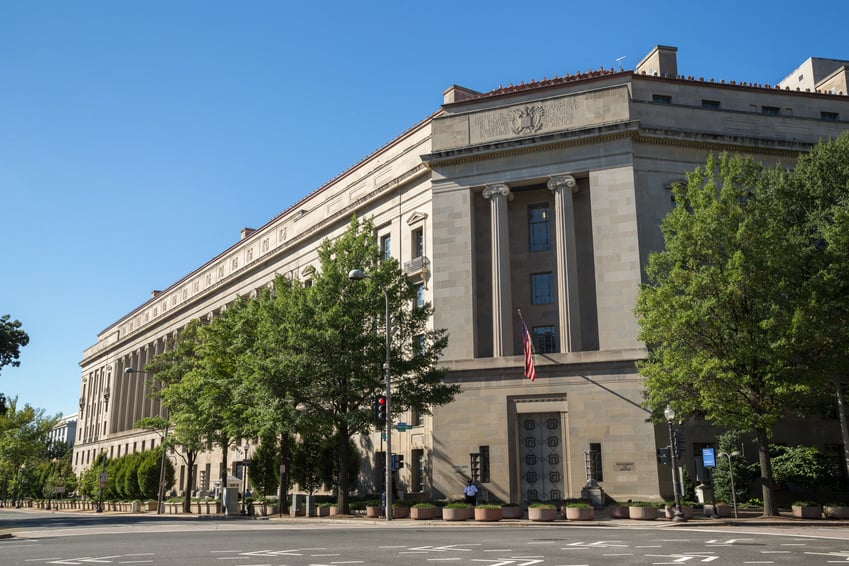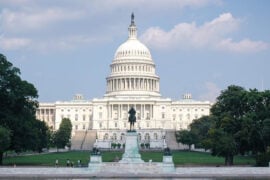In brief
Development and integration of critical infrastructure for electric vertical take-off and landing (“eVTOL“) aircraft remains critical for the wide-scale adoption and the future of Advanced Air Mobility (“AAM“). With the path towards certification rapidly gaining momentum, the first commercial eVTOL operations are likely to begin as early as 2025. While initial operations will rely on existing infrastructure (e.g., airports/heliports), the long-term success of AAM will depend heavily on the development of new facilities and capabilities needed to support the operational ecosystem. The complex legal issues around AAM infrastructure include federal airspace and local zoning issues, digital infrastructure, multimodal, and power sources – to name a few.
This alert provides an overview of the key infrastructure requirements and legal challenges for AAM, with a focus on vertiports as the essential facilities for take-off and landing of eVTOL aircraft. Importantly, industry stakeholders have an opportunity to provide comments to the U.S. Department of Transportation (DOT) on a range of AAM-related topics until 16 August 2023.
In more detail
Government and non-government AAM stakeholders are prioritizing the development of infrastructure requirements, which is critical for AAM to progress from initial low-frequency and piloted operations to high density and eventually autonomous operations. In April, the FAA released an updated blueprint for airspace and procedure changes to accommodate future AAM RFI operations (“AAM Blueprint”)1, which recognizes that mature operations will be achieved at scale through a “crawl-walk-run” approach.
From an infrastructure standpoint, initial AAM operations will leverage existing infrastructure (e.g., airports/heliport) and the current regulatory and operational environment. Higher frequency and autonomous operations will require additional operational rules and infrastructure – including in urban environments, which present unique issues related to local zoning and land use restrictions.
In May, the DOT published a Request for Information on Advanced Air Mobility (AAM RFI)2, seeking public comment on a number of AAM-related topics, including: AAM future use cases, expansion of AAM while maintaining safety, the necessary legal and policy framework, environmental impacts, and the future of AAM and creation of new jobs3. Due to heightened interest in this topic, the comment period on the AAM has been extended until 16 August 20234, and presents an important opportunity for stakeholders to voice their views.
In the context of infrastructure, the RFI highlights the following as necessary to support AAM operations: “ground infrastructure; services, including emergency services; accessibility and competition; telecommunications; weather observation and prediction; utility resources; maintenance of vertiports; sensory systems needed for communications, navigation, and surveillance; and multimodal compatibility.”
Design standards and guidance for vertiports
Governments and standards organizations are developing design and safety standards for vertiports, which will be critical in determining the process, cost, and timeline for constructing vertiports and adapting existing infrastructure. Existing infrastructure is simply insufficient to handle the scale and demands for the new eVTOL sector, and the construction of new vertiport facilities areas will be required to realize the economic, social, and business promise of AAM.
In October 2022, the FAA released new vertiport design guidelines containing interim safety standards and guidance for infrastructure facilities and developers. Ultimately, the FAA expects the guidance to evolve into a performance-based design standard in the form of an Advisory Circular, which may be influenced by design standards developed by other stakeholders, including standards development organizations and other jurisdictions’ aviation authorities.
The forthcoming Advisory Circular will serve as guidance for vertiport design, and the industry does not expect the FAA to certify vertiports, which would help in reducing costs and accelerating the timeline for construction of the volume of vertiports that will be required for long-term AAM operations. Stakeholders will need to continue to engage with governments and regulators on vertiport design and development considerations to ensure a balance of safety and operational viability.
Similar to the FAA, in early 2022 the European Union Aviation Safety Agency (EASA) published its first-ever vertiport design specifications5. Standards development organization ASTM International also published a new Standard Specification for Vertiport Design in 2022, which is intended to provide scalable specifications to states and municipalities for the design and development of AAM infrastructure.
State and Local Government Role in Vertiport Development
To realize the projected economic benefits of AAM, state and local governments will need to actively plan for AAM infrastructure to accommodate future demand, support private investment, and ensure the viability of the AAM market. Siting of vertiports will need to allow room for growth based on government and industry forecasts. Vertiports will need to be linked to surface transportation when possible, particularly in the case of cargo operations. State and local governments will need to incorporate vertiports into broader transportation and planning efforts, particularly given the significant electric power requirements to charge eVTOL aircraft on-site.
Importantly, the FAA recommends that local governments have zoning protections in place to protect airspace in and around vertiports, yet localized (non-standardized) approaches can create less certainty for developers of infrastructure across broad operational areas.
It will be critical for industry stakeholders to work with federal, state, and local regulators on zoning and other regulatory requirements to secure investment, obtain permits (including conditional use as applicable), and begin construction of new facilities.
Electric Power Requirements for Vertiports
Ensuring sufficient electric power for vertiports will require both government and non-government stakeholders. As a first step, utilities will be required to conduct engineering design studies to determine the costs and requirements for running power to vertiport facilities, which comes with significant cost and lead time. Understanding the anticipated demand on power grids by AAM, the ability of power grids to accommodate anticipated demand, and improvements or investments in power infrastructure needed to enable AAM operations will be critical to the viability of vertiports at the scale required for high-density AAM operations.
What’s next
Vertiport facilities will need to be ready to handle commercial operations as soon as 2025, and stakeholders must also factor in considerations toward managing high frequency operations in the future. Industry and government stakeholders need to continue to collaborate for the development of a long-term strategy for AAM, and it is critical for industry stakeholders TO engage with regulators on their operational and long-term needs.
1 See U.S. FAA, Urban Air Mobility (UAM) Concept of Operations 2.0 (2023)
3 Advanced Air Mobility Coordination and Leadership Act, Pub. L. No. 117-203 (2022)
5 See EASA Prototype Technical Design Specifications for Vertiports (2022)



